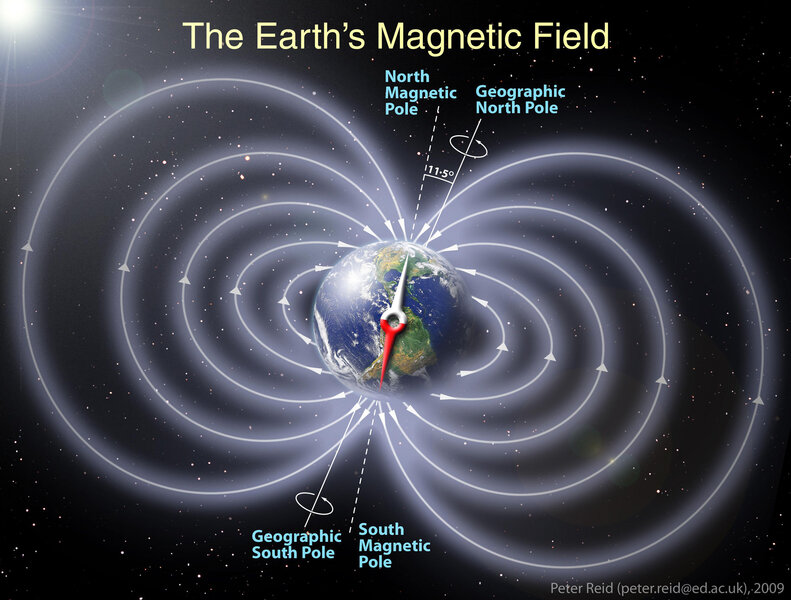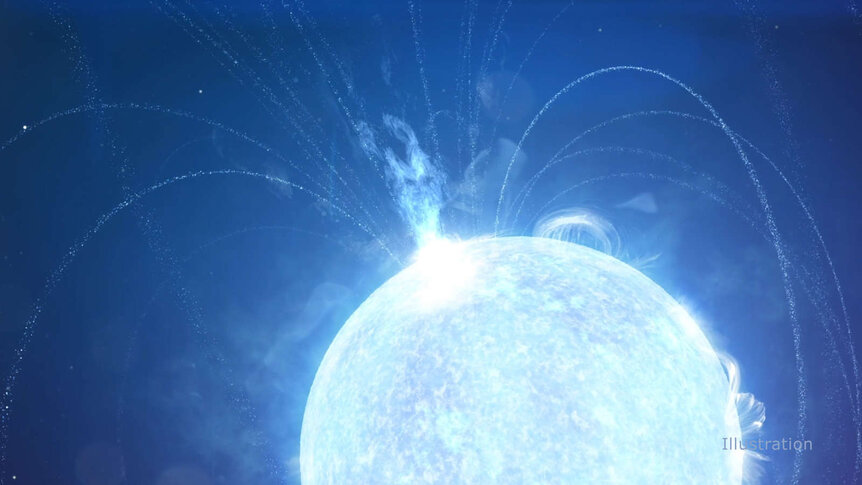Create a free profile to get unlimited access to exclusive videos, sweepstakes, and more!
Can Electromagnetism Rip an Object (or a Person) Apart? The Science Behind Peacock's Teacup
Teacup's assassin uses an invisible magnetic field to trap and kill its prey.
Could a strong enough magnetic field kill a person, or anything else for that matter?
Electromagnetism is one of the four fundamental forces which govern our universe. Each of us is exposed to electromagnetism all day, every day. It’s what allows us to see things, to feel heat from the Sun, and to sit on a chair without falling through it. The entire planet is enveloped in a magnetic field which protects us from cosmic radiation and charged particles from the Sun. Our lives and activities are dependent on the presence of magnetic fields, but we like them to be pretty mild most of the time. Like water, a little bit of magnetic field is useful and welcome, but a lot can be deadly.
Peacock’s new sci-fi thriller Teacup drops a rural community inside a mysterious electromagnetic trap from which death is the only escape. The boundaries of the trap are invisible, save for a spray painted line denoting its edge, but anything living that crosses its threshold is violently torn inside out.
Could Teacup’s deadly magnetic field trap actually exist?
If you’ve ever played with refrigerator magnets, you’re familiar with the way that magnets attract or repel other objects. What you might not know is that even our bodies react to magnetic fields, just not as obviously as the surface of your fridge.
When exposed to a magnetic field, the electrons in your body rearrange themselves to oppose that field, in a process known as diamagnetism. Put simply, the field pushes on you and you push back. Usually, the force of the field is so small that it is overwhelmed by other forces, by gravity or by the force of our own directed movements. But if the field is strong enough, it can cancel out those other forces, allowing scientists to levitate a frog, a grasshopper, a tomato, and a wide range of other living organisms.
The strength of the fields required to cancel out the downward force of gravity is staggering, much stronger than anything we ordinarily encounter. The strength of the magnetic fields around the Earth and the Sun are measured in gauss, a unit signifying the density of magnetic flux. The Earth’s magnetic field averages about 0.5 gauss, while the Sun’s field is twice as strong on average. It’s worth noting that the field strength around sunspots is considerably stronger, often between 2,000 and 3,000 gauss.
Counterintuitively, you can find much stronger magnetic fields than that in just about every hospital on the planet. The fields produced by MRI machines measure between 5,000 and 30,000 gauss, and are often expressed in units of tesla, each of which is equal to 10,000 gauss. Even those artificial magnetic fields, 10 times stronger than those found around sunspots, aren’t enough (thankfully) to rip a person apart.
Living tissue is only very weakly diamagnetic, so you need a really strong field to produce an effect. When scientists set out to levitate a small frog, they had to produce a field of 16 teslas (160,000 gauss). The frog was reportedly unharmed and returned to the biology lab after the experiment. The strongest continuous magnetic field yet produced by humans was 45.22 tesla and required a machine a couple stories tall.
Stronger fields have been produced, but only fleetingly. In 2018, scientists created a 1,200-tesla field for about 40 microseconds. The trouble with creating fields that strong is that they tend to destroy the instrument that creates them. The villain in Teacup has achieved the seemingly impossible by generating a field strong enough to destroy anything that crosses it without also destroying itself.
If we want to find sustainable fields strong enough to really do some damage, we need to set a course for the nearest magnetar, a kind of neutron star formed in the aftermath of a supernova. Magnetars produce magnetic fields trillions of times stronger than anything we can produce, fields so powerful that they crack the surface of the star. If you were to fly to within about 600 miles of a neutron star’s surface, its magnetic field would rip the electrons from your body, dismantling you on an atomic level.
Catch new episodes of Teacup every Thursday, only on Peacock.
































